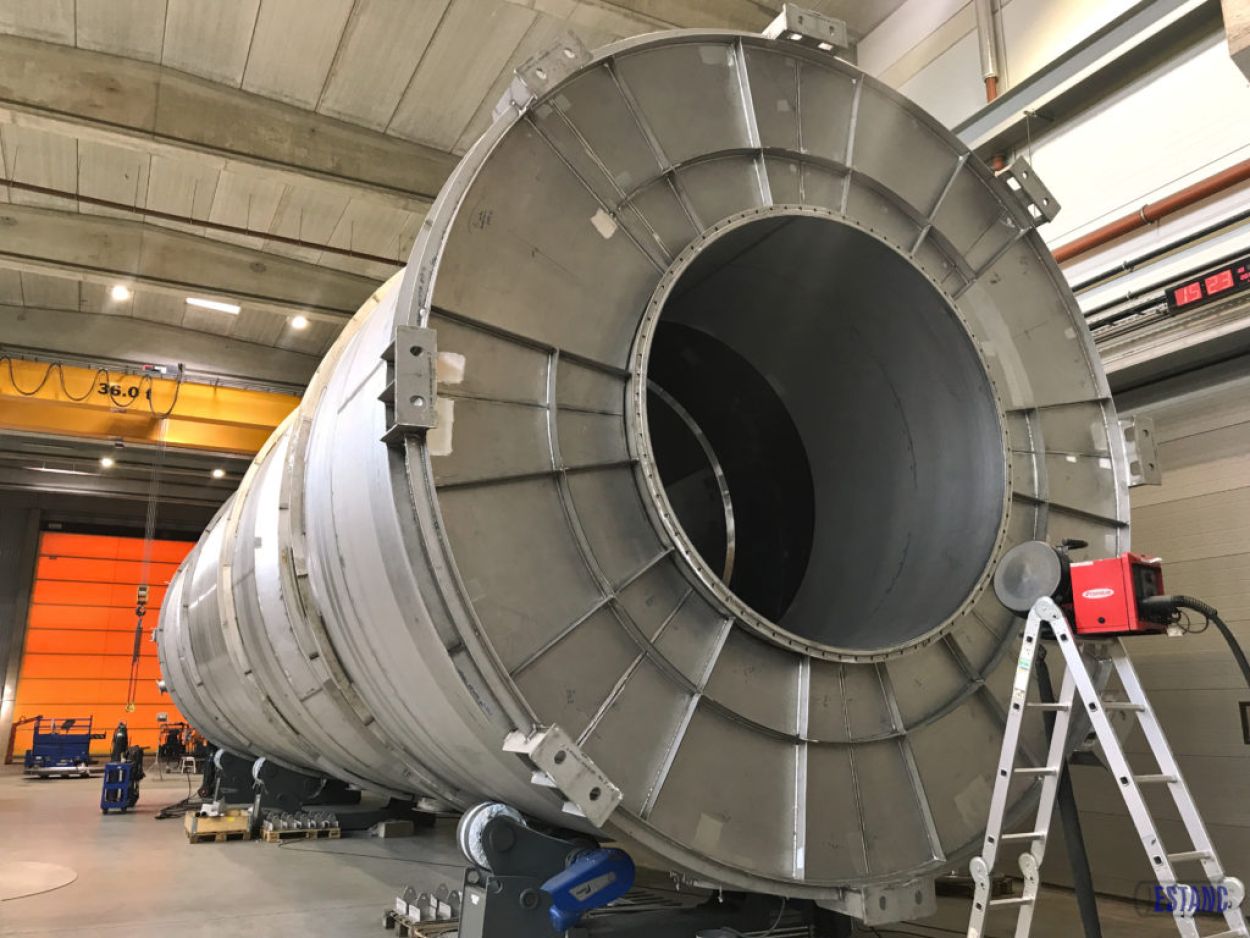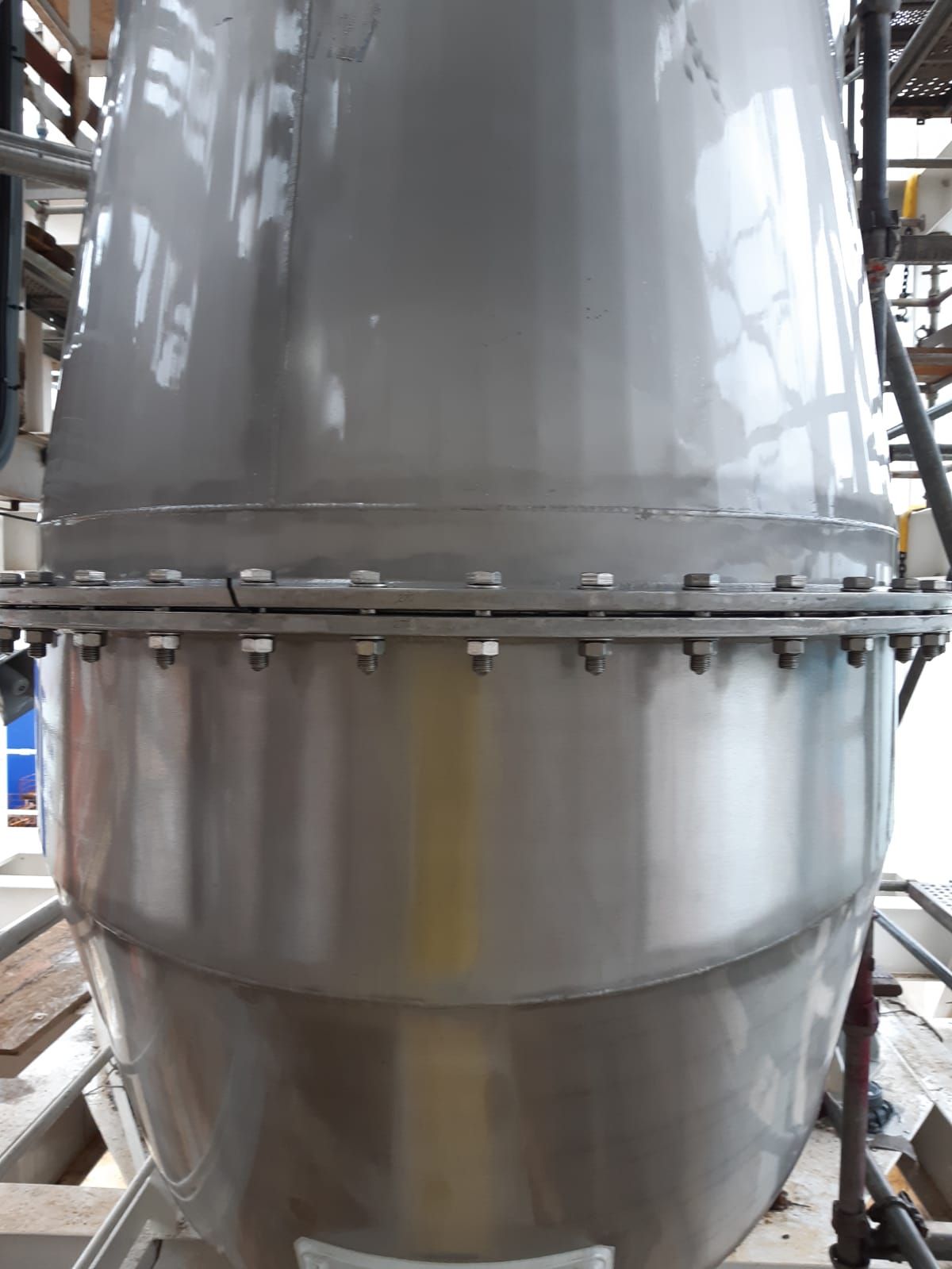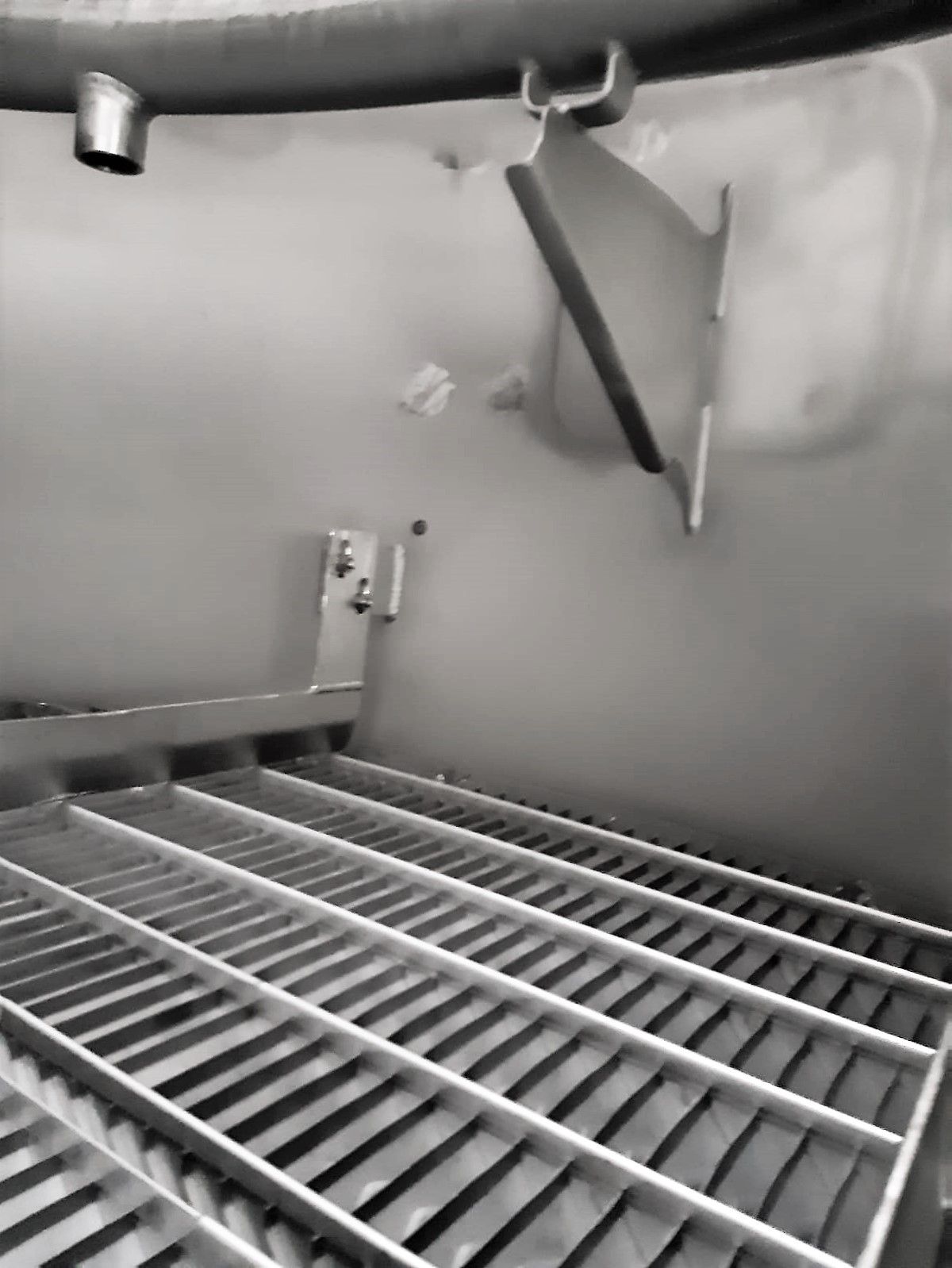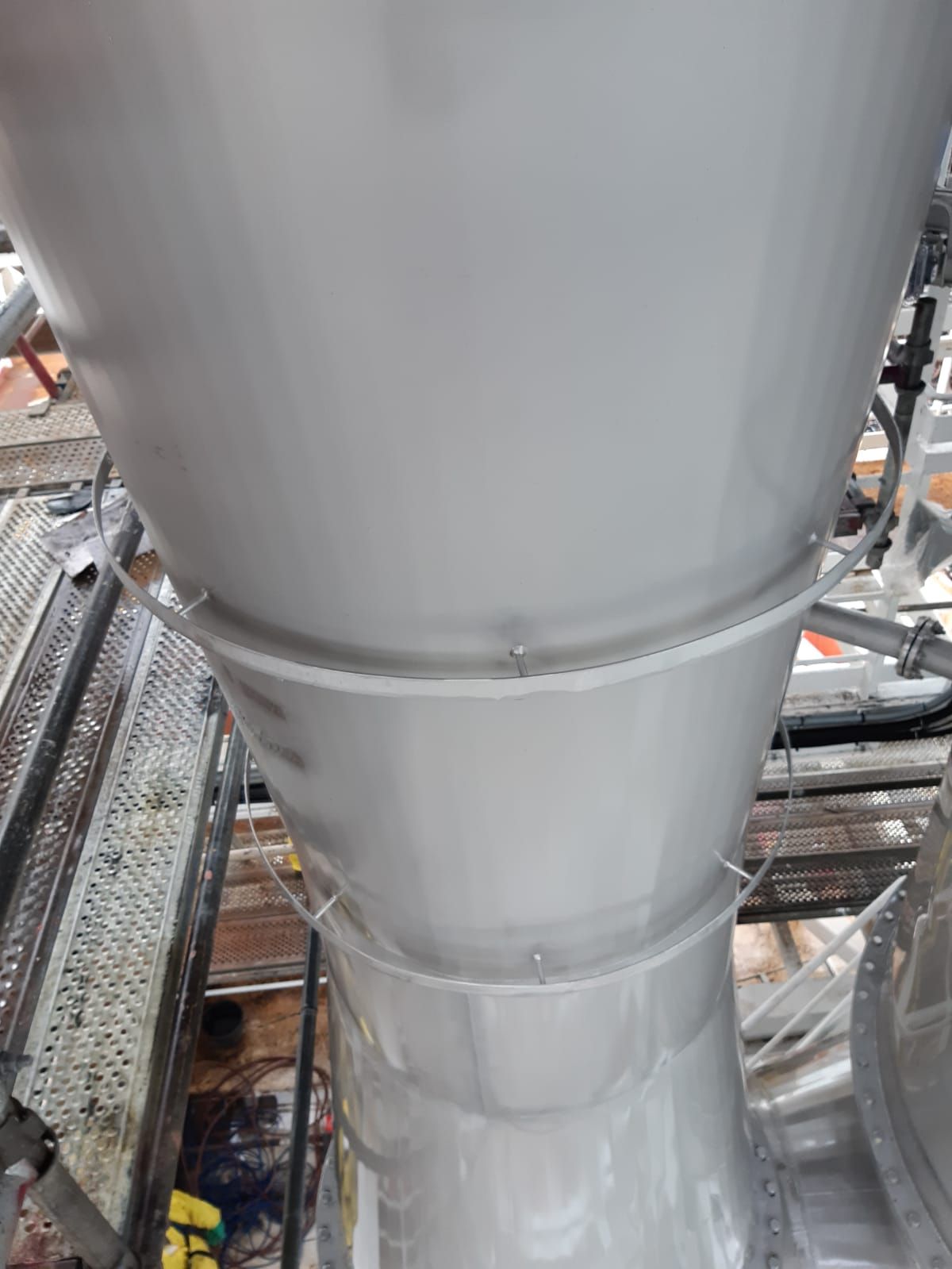
Scrubbers corrosion fix and surface treatment
- Welding
- Buffing & polishing
- Pickling and passivation
- Inspection & troublshooting
- Read More
Scrubber is a system that is designed to by the use of water wash the exhaust gases from main, auxiliary and boilers to remove sulfur dioxide (SO2) which is a toxic gas, that is directly harmful to human health. There different designs in the market today however they could be divided into two categories, open and closed types. Power consumption of operating a scrubber system is typically between 1-2% of main engine power.



Stainless Steel Scrubber Corrosion Problems
- Ferrous contamination during installation on board
- Poor surface treatment during fabrication
- Both above in combination with seawater
Ferrous Contamination:
The residue is free (unAlloyed) iron on the surface. Free iron should not be confused with Alloyed iron which is a major component of stainless steel, or with ferrite which is a specific type of crystalline structure and a normal component of stainless steel, especially cast stainless steel. If non-sufficient surface treatment of the stainless steel on completion of fabrication and / or installation on board will definitely resulted in an active surface condition instead of the required passive surface condition. This will give free iron the opportunity to embed itself so that the passive oxide film shall been penetrated through this ferrous contamination. Iron residue may also be transferred to Stainless steel surfaces from materials which were previously used on steel or iron parts. Of course, iron or steel shot or grit used to remove scale or other materials from the Stainless steel items would leave iron residue on the surface. One of the most difficult sources of iron residue to avoid is the atmosphere itself. Industrial areas have a surprising amount of iron in the air. This iron “falls out” onto exposed items, including previously cleaned Stainless steel parts. Also, water which is used to “clean” the surfaces may itself contain iron which will be deposited onto the surfaces thought to be clean. Note that water may also contain other chemicals which may leave rust-colored deposits which may be mistaken for indications of the presence of free iron. Appearance – Free, unAlloyed iron on the surface of any item will oxidize (rust) given the appropriate conditions (warmth, moisture, and oxygen). The reddish brown deposits are easily recognized Contamination on Stainless steel surfaces with free iron is common. It can be avoided only with very careful and correct surface treatment including professional pickling and passivation and related technical cleaning processes.
ISTECH stainless treatment provides the folllowing technical services on site / on board in the best interest of your scrubbers:
- Stainless steel surface condition inspection
- Interior piping inspection (endoscope camera)
- NDT weld inspection
- Surface passivity and roughness testing
- Stainless steel surface repair by buffing, polishing, welding
- Corrosion removal
- Stainless steel pickling and passivation
STAINLESS STEEL SURFACE BUFFING - GRINDING - POLISHING - WELDING
CLEANING OPERATIONS - PICKLING AND PASSIVATION